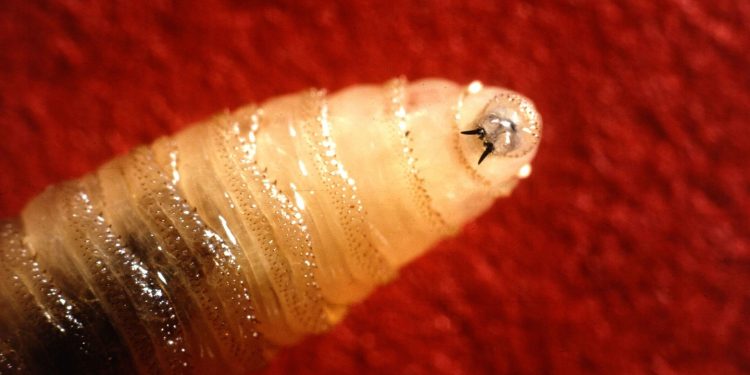Jakarta, Indonesia Sentinel — A dangerous flesh-eating parasite, Cochliomyia hominivorax, also known as the screwworm, has re-emerged in Central America, raising alarms across the region and in the United States. Once nearly eradicated in the mid-20th century, this parasitic infestation is spreading northward, with officials warning of significant risks to livestock and human health.
The screwworm, which infects warm-blooded animals through open wounds, was a major agricultural and public health issue in the United States from the 1930s to the 1950s, costing farmers an estimated $100 million annually. Aggressive sterilization campaigns and the establishment of buffer zones along the US-Mexico border effectively controlled the parasite by the 1980s. However, recent outbreaks suggest the screwworm is making a troubling comeback.
Alarming Spread Since 2023
The United States Department of Agriculture (USDA) reported a surge in screwworm cases in Panama, where detections skyrocketed from an average of 25 cases annually before 2023 to over 22,000 by December 2024. The outbreak has spread northward through Costa Rica, Nicaragua, Honduras, Guatemala, and, most recently, Mexico, where the first positive case was confirmed on November 22, 2024.
Human cases have also been reported, including a confirmed fatality in Costa Rica earlier this year. According to the Centers for Disease Control and Prevention (CDC), the parasite can infect humans by laying eggs in open wounds. The resulting larvae burrow into the tissue, consuming flesh and causing severe pain and potentially fatal infections if left untreated.
How the Screwworm Operates
Adult female screwworm flies lay up to 300 eggs at a time in open wounds or body cavities of living animals. Over their lifespan of 10 to 30 days, they can lay thousands of eggs. Once hatched, the larvae feed on the host’s tissue, deepening wounds and creating significant damage. The process not only inflicts extreme pain but also leaves the host vulnerable to secondary infections.
Even minor wounds, such as insect bites or scratches, can attract screwworm flies. In livestock, infestations often go undetected until wounds become large and festering, leading to significant economic losses.
A Regional Crisis
Efforts to control the screwworm have historically involved sterilization programs, where sterile male flies are released to disrupt reproduction cycles. This strategy was highly successful in eradicating the parasite from much of North and Central America. However, with the recent surge in cases, particularly in Mexico, officials are reevaluating control measures.
The USDA and Panama have maintained a buffer zone in eastern Panama since 2006 to prevent the parasite from spreading northward into Central and North America. Despite these efforts, the infestation has advanced rapidly, likely exacerbated by climate factors and increased movement of animals across borders.
Researchers Identify New Ancient Human Species, the Homo juluensis
Preventive Measures
Currently, there is no approved medical treatment for screwworm infestations in humans or animals aside from manually removing the larvae. Prevention remains the most effective strategy. The CDC recommends keeping wounds clean and covered, using EPA-approved insect repellents, and minimizing contact with livestock and wildlife in affected areas.
In response to the outbreak, the USDA’s Animal and Plant Health Inspection Service (APHIS) has restricted livestock imports from Mexico while gathering more information on the infestation’s size and scope. Pet owners are also advised to monitor wounds on their animals for signs of screwworm infestation, including discharge, swelling, and visible larvae.
Implications for the US
Although the screwworm has not yet been detected in the United States, the growing proximity of the outbreak poses a serious threat. A resurgence could devastate livestock industries and strain public health resources. With billions of dollars invested in eradicating this parasite over the decades, its return underscores the need for sustained vigilance and international cooperation.
The screwworm’s reappearance is a stark reminder that even decades-old threats can resurface, demanding swift and coordinated action to protect human and animal health alike.
(Becky)

























